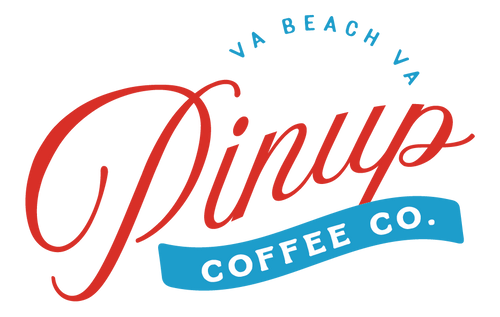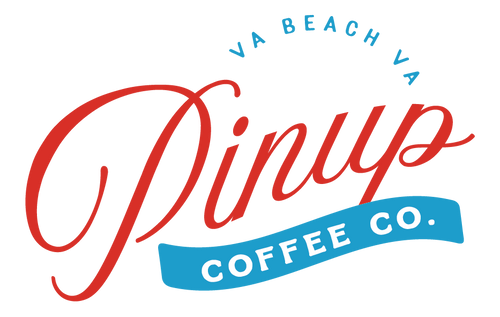Single Origin Coffee vs Coffee Blends
The Single Origin Edition
With the rising popularity of specialty coffee (for good reason) we want you to be well-armed before taking the jump into coffee exploration and never have to be confused when your friend talks about some special Costa Rica Tarrazu coffee again.
Whether you're a seasoned coffee lover or just starting out, we'll explore the unique flavors and stories behind single origin coffees here, and coffee blends in the Blends Edition of this blog. With this knowledge you will be well-armed to understand the difference between the two and be able to nail down your perfect coffee.
What is Single Origin Coffee?
A single origin coffee is coffee from a specific country, region, or even a specific farm. Obviously, getting all the way to the farm is ideal for appreciating the quality of the coffee, and giving the farmer and producer credit for their work. It is important to remember that the coffee plant is a crop, and coffee is a seed within the fruit (cherry), and it undergoes many processes including fermentation, de-pulping, washing, drying, and roasting. The same single farms’ coffee could taste different year to year.

The most enjoyable part of single origin coffees is tasting the nuances (experiencing the flavor notes) and exploring how different varieties and processing methods taste.
Note things like country, region, variety and processing method. Think of this like wine; do you like Chardonnay, Cabernet Sauvignon, Merlot? Those are different grapes (varieties). Would you select a fine wine that just said “Italy” on it, and didn’t list the region or the winery? Compare this to a coffee that just says “Colombia” and doesn't list the region, farm, or processing method if you want to get down to single producer coffee.
Different roasters may label coffees as single origin according to their own system, like labeling a coffee as a Mexico single origin coffee without further details. But this isn’t to say that a regional coffee is bad, it will still allow you to taste the characteristics of that country's coffee and could still be ethically traded. At Pinup Coffee Co, we strive to bring in coffees from single producers, and the occasional community lot. Community lots are also quite incredible; for us, these are small lots of coffee from a very small region where families may combine their (very, very small) yields together because each of them alone did not have enough volume to sell a full bag. We get to taste incredible coffee and support these families, which is a win-win when done right!
Key Differences Between Single Origin and Blends
The biggest question you want to ask yourself before deciding between a blend and a single origin coffee is:
Do I want to explore flavors in coffee, or find something I can come back to every day?
If you choose a single origin coffee, you’ll be able to experience distinct flavors reflecting the region's terroir and processing method. You’ll start to learn what types of coffee you like along with which roast level suits you best. Do you lean towards naturally processed African coffees, a light roasted Central American coffee, or dark roasted Brazilian coffee? Exploring is the only way to find out!
Dig into the Coffee Blend Edition HERE!
Or, are you looking to find something you can depend on, or something to brew as your dedicated espresso coffee? You might be looking for a blend. If you don’t want to fall in love with a coffee only to see it out of stock a few weeks later (right after you dialed in your brewing method) a high quality blend is up your alley. You’ll receive a balanced, consistent coffee that was handcrafted to meet a certain flavor profile.
Benefits of Single Origin Coffee
Single origin coffees are often preferred by experienced coffee folks because of their unique characteristics. A good roaster will make a specific roast profile (or roast curve - like a recipe) for that coffee which highlights the interesting and favorable parts of the coffee’s profile. So not only do you get to taste a single region or single farmer’s coffee, but also the roasters best take on it.
Coffee is a crop, so it is important to remember that it is a seasonal product. Coffee is harvested at different times throughout the year depending on the growing region. Single origin offerings are usually shipped to the roaster shortly after their arrival to the US, so you get a fresher product. While raw (green) coffee lasts much longer than roasted coffee, roasters who rotate their offerings is usually a good sign and means that they are releasing fresh coffees to their community.
Some single origin coffees may actually be community lots, meaning multiple very small producers contributed their cherry. These are often from very close villages or small regions which can still produce a unique and incredible coffee.
Buying single origin coffee, in particular those from single producers or ethical community lots, can also allow you to savor in the flavor of the hard work and care of a group of people instead of a massive corporate giant. Your dollars are closer to the source, and if you buy coffee from roasters whose values you align with, you support the continuation of these practices. Roasters may bring in the same coffee year over year because it’s delicious AND they are building a relationship of value with a producer. Note: not every roaster, or every coffee, may have such ties. But if it’s something you care about, read into the bio of each coffee or ask your roaster, they’re probably willing and excited to talk about it.
An Intro to Blended Coffee
Coffee blends became popular because of their consistency and their purpose (espresso for example). A coffee blend is just like it sounds: a blend of different coffees. Usually this is a blend of different origins, regions, or processing methods, with a goal of a consistent flavor profile.
Blending has a ton of potential, and is typically done for three reasons.
- To create a consistent, delicious coffee to brew on a daily basis. These probably have a specific flavor profile (chocolatey and nutty for example) so a roaster will combine coffees from around the world to create said profile.
- To make a blend meant for a particular purpose (cold brew or espresso for example). This is also a bit of number one, because we want a certain flavor profile out of these, but it takes into account the brewing process in order to create the masterpiece that we imagine.
- To make a good coffee even better. Coffee roasting is a bit of an art and a science, a roaster can take a good coffee and blend it with another to make an end product that is even better than its parts. The options are endless, and when you find a roaster you trust we recommend trying all they have to offer!
At Pinup Coffee Co, we put a lot of hard work and dedication into our coffee blends, we post-roast blend, and use great coffee that lands us right on target without cutting corners. Blending coffee can be a very impactful way to create delicious coffees for many people to love, and should not be overlooked.
Choosing the Right Coffee for You
First and foremost, speaking with staff at a roastery is the best way to help nail down what you’re looking for. You can let them know what equipment you’re brewing on and the types of coffees or roast levels you enjoy, and walk out with a great match.
Shopping online? No problem! If you’re fairly new to specialty coffee, a medium to dark roasted blend is a great starting point. Read about the coffee and imagine what it might taste like and if it aligns with your preferences. If so, get some! If not, go for a lighter roast or darker roast, or search for something that matches your brewing method.
A little more experienced in the coffee world? Check out single origin coffees, and be sure to note details like roast level, processing method, and origin. You may learn that you really like a brighter Kenyan coffee over a darker Central American. Or you may learn that you’ll stick with Slightly Dangerous until the end of time, who knows!
Still not sure? A subscription is an excellent way to begin your exploration. Coffee will come right to your door without having to think about running out. For our Roasters Choice subscription, we send out a mix of blends, single origin coffee, and limited releases on your schedule, roasted fresh (and rested to off-gas), with all of the information you need to learn about what you love best. At Pinup Coffee Co, we put a lot of hard work and dedication into our coffee blends, we post-roast blend, and use great coffee that lands us right on our target profile without cutting corners. We put the same love and care into each single origin coffee as well, and are proud of each and every coffee we share with you
In the end, know that each coffee will taste different, and you may love it or decide certain things aren’t for you. There are unique advantages to these two coffee options, and both are worth exploring. The important thing is to note the descriptors on each coffee and how they taste to decide if that’s in line with your preferences. A coffee might have light and tea-like descriptors or full-bodied and bold descriptors. Learn to analyze these to help you narrow down your favorite, or keep trying different roasters and origins, the options are endless.
Have a question or want to learn more? Let us know! And cheers to that next great cup.








